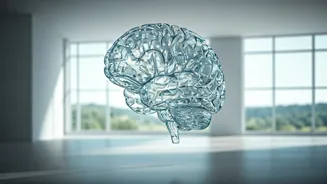The Headache Spectrum
Headaches manifest in a vast array of forms, most of which are benign and self-limiting. The majority of headaches are classified as primary headaches,
encompassing tension headaches, migraines, and cluster headaches. Tension headaches are often described as a tight band around the head, while migraines can trigger throbbing pain, accompanied by sensitivity to light and sound, nausea, and vomiting. Cluster headaches are characterized by intense, debilitating pain typically focused around one eye. These types of headaches are not generally associated with underlying serious medical conditions and are often manageable through lifestyle adjustments, over-the-counter medications, or prescription treatments. However, an informed understanding of the variations is crucial for effective self-management.
Warning Sign Checklist
Certain headache symptoms represent potential red flags that necessitate prompt medical evaluation. The sudden onset of an unusually severe headache, often described as a ‘thunderclap headache’, should not be ignored. Accompanying symptoms, such as fever, stiff neck, rash, vision changes, weakness, numbness, or difficulty speaking, are all critical indicators. Headaches following a head injury, particularly if there's loss of consciousness or persistent symptoms, require immediate medical attention. Any progressive worsening of headaches over time, or a change in the pattern of existing headaches, should also prompt a visit to a doctor. When in doubt, it is always better to err on the side of caution and seek professional medical advice to rule out serious underlying causes.
Seeking Professional Help
Knowing when to consult a healthcare professional is paramount. Individuals experiencing any of the red flag symptoms should seek immediate medical evaluation. This is especially true if headaches are accompanied by neurological symptoms like weakness, vision changes, or loss of balance. If headaches are severe and interfere with daily activities, even without red flag symptoms, medical advice is warranted. Persistent headaches that do not respond to over-the-counter medications or lifestyle adjustments, or if there’s a significant change in the pattern of headaches, should also be assessed by a doctor. A comprehensive evaluation may involve a detailed medical history, neurological examination, and, possibly, imaging tests like CT scans or MRIs to identify any underlying conditions that may be contributing to the headaches. The goal is to diagnose the cause and initiate appropriate treatment strategies.
Lifestyle Factors Matter
Lifestyle modifications often play a significant role in managing headaches. Consistent sleep schedules and adequate rest are essential. Maintaining a regular eating pattern and avoiding skipped meals can prevent headaches. Stress management techniques, such as yoga, meditation, and deep breathing exercises, can lessen headache frequency and intensity. Regular exercise promotes overall health and can reduce the likelihood of headaches. Adequate hydration is critical, as dehydration can trigger headaches. It's also advisable to limit the intake of caffeine and alcohol, as these substances can sometimes trigger headaches. Recognizing the triggers, such as specific foods, smells, or environmental factors and consciously avoiding them, is crucial for prevention. By integrating these strategies into daily routines, it's possible to significantly improve headache management and reduce their impact on daily life.
Prevention is Key
Preventive strategies focus on mitigating triggers and maintaining healthy habits. Keeping a headache diary to track the frequency, intensity, and potential triggers can be invaluable. This helps identify patterns and contributing factors. For individuals with frequent headaches, a doctor might prescribe preventive medications. These medications are intended to decrease the frequency and severity of headaches. Regular check-ups and open communication with a healthcare provider are crucial for managing headache symptoms. This will allow them to tailor a specific treatment plan. By understanding the signals that the body is sending, and taking proactive measures, it is possible to significantly decrease headache occurrences, improve overall health, and feel better.


